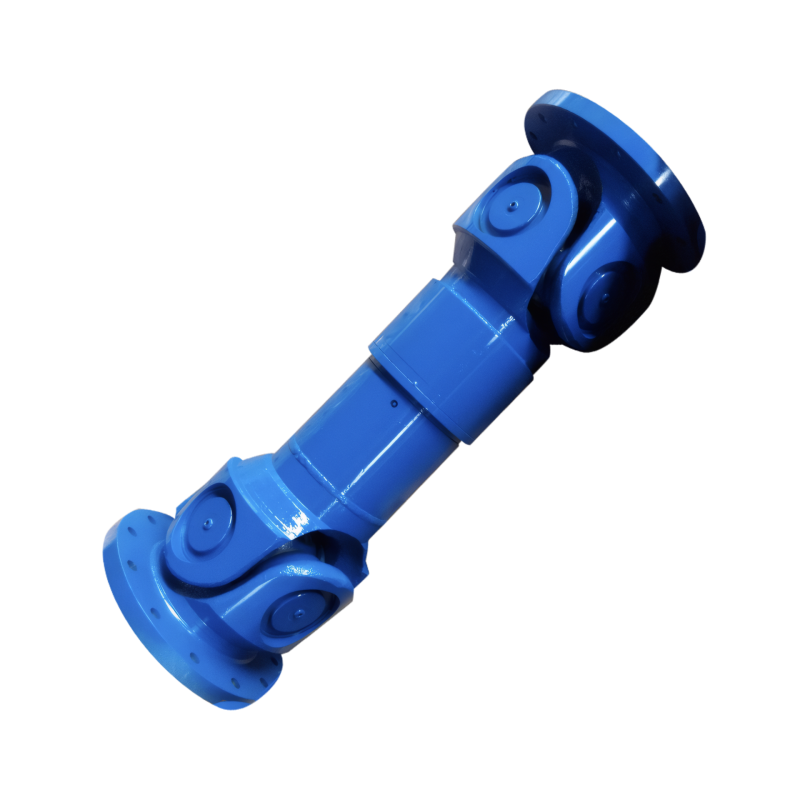Introduction to the structural strength of truck drive shafts
Structural Strength Characteristics of Truck Drive Shafts
Key Components and Their Structural Roles
Truck drive shafts primarily consist of three core components: the shaft tube, telescopic sleeve, and universal joints. The shaft tube serves as the main structural element, typically manufactured from high-strength alloy steel or aluminum alloy 6061. This hollow tubular design achieves a balance between weight reduction and torsional rigidity, with aluminum variants reducing mass by 30% compared to steel while maintaining sufficient tensile strength for most commercial applications.
The telescopic sleeve enables automatic adjustment of distance variations between the transmission and drive axle during suspension movement. Modern designs incorporate nylon-coated spline teeth to enhance wear resistance and reduce impact loads. In heavy-duty applications, the sleeve may feature reinforced welds at the junction with the shaft tube to prevent fatigue cracking under cyclic loading.
Universal joints represent the most critical stress concentration points. The cross-axis design with needle bearings allows angular movement while maintaining rotational continuity. Finite element analysis reveals that maximum stress occurs at the transition between the cross-axis and bearing housing, typically reaching 168-169 MPa under peak torque conditions. This necessitates the use of 20Cr alloy steel with a yield strength of 540 MPa to ensure a safety factor exceeding 3.0.
Load Distribution Mechanisms Under Dynamic Conditions
During vehicle operation, drive shafts experience complex loading patterns combining torsion, bending, and axial forces. When traversing uneven terrain, the universal joints accommodate angular displacements up to 15° while maintaining power transmission efficiency. This angular movement creates non-uniform stress distribution, with the cross-axis bearing housing experiencing 2.6-3.2 times higher stress concentrations compared to the shaft tube.
The telescopic sleeve's spline engagement must withstand shear forces exceeding 50 kN during sudden torque surges. Advanced designs employ interference fits between the spline teeth and housing, combined with laser-welded seams to prevent separation under extreme loads. For heavy trucks, the critical failure mode often involves plastic deformation of the cross-axis bearing housing rather than shaft tube fracture, due to the localized stress amplification at these components.
Vibration analysis shows that improper balancing can reduce the critical rotational speed by 40%, leading to resonant vibrations that accelerate component fatigue. Manufacturers address this through precision balancing to within 0.5 oz-in (3.5 g-cm) and the use of damping materials in the telescopic sleeve assembly to suppress high-frequency oscillations.
Material Selection and Structural Optimization Strategies
Modern drive shafts employ a dual-material approach combining high-strength steel for universal joints with lightweight alloys for the shaft tube. The cross-axis typically uses 20CrMo alloy steel with carburizing treatment to achieve a surface hardness of 58-62 HRC, while maintaining core toughness to resist impact loads. For aluminum shaft tubes, 6061-T6 alloy provides optimal corrosion resistance and fatigue strength, with a fatigue limit of 90 MPa compared to 180 MPa for steel variants.
Structural optimization focuses on reducing stress concentrations through geometric modifications. Finite element simulations guide the design of fillet radii at component transitions, with optimal values typically ranging from 3-5mm to minimize stress peaks. Some manufacturers implement gradient thickness profiles in the shaft tube, increasing wall thickness by 20% near universal joint attachments to enhance local stiffness.
Innovative manufacturing techniques such as friction welding for aluminum-steel hybrid shafts improve joint strength by 35% compared to traditional methods. Laser cladding technology applies wear-resistant coatings to spline teeth, extending service life by 2-3 times under abrasive conditions. These advancements enable modern drive shafts to withstand peak torques exceeding 10,000 N·m while maintaining operational reliability over 500,000 km service intervals.
 Customized design of drive shafts for special vehicles
Customized design of drive shafts for special vehicles
 The durability of the drive shaft for off-road vehicles
The durability of the drive shaft for off-road vehicles
 Introduction to the structural strength of truck drive shaft
Introduction to the structural strength of truck drive shaft
 The layout of the drive shaft for a four-wheel drive vehicle
The layout of the drive shaft for a four-wheel drive vehicle
 简体中文
简体中文 English
English
